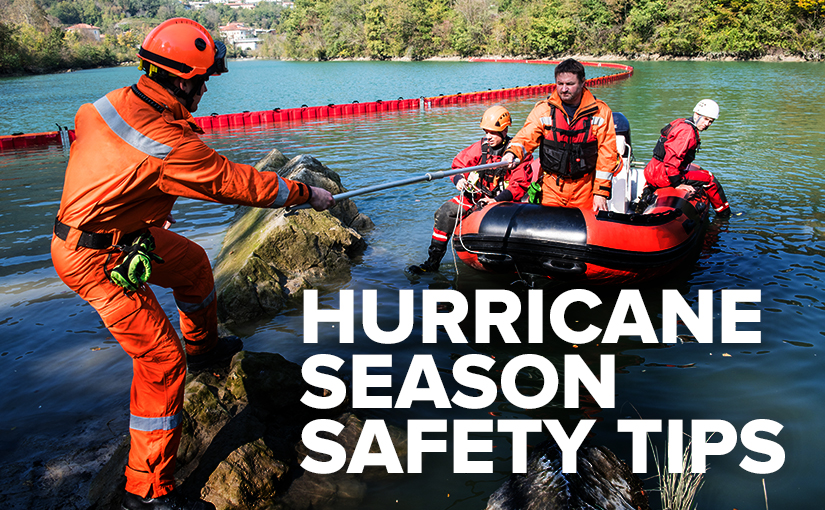Did you know that the 2018 Atlantic hurricane season runs from June 1 to November 30? The National Weather Service defines a hurricane as a “tropical cyclone with maximum sustained winds of 74 mph or higher.” Whether you find yourself in a hurricane, cyclone, flood or typhoon, all of these storms can cause disastrous damage.
Before any storm hits, all residents (especially coastal residents) should form evacuation plans to identify a safe shelter and a route to get there.
If the storm hits and you find yourself working as a response or cleanup worker after a hurricane, use this information to stay safe.
Make sure you use the following personal protection equipment (PPE):
- Eye and face protection: Goggles, full-face shields, or other suitable protection as needed to protect against flying objects and liquid splash hazards.
- High-visibility apparel: High-visibility safety apparel and headwear compliant with ANSI/ISEA 107-2004, along with other traffic safety measures, in areas where vehicles or heavy equipment are used. This is especially important when working in temporary roadway work zones. (View this OSHA Fact Sheet for additional OSHA-published materials on work zone traffic safety.)
- Hand protection: Appropriate gloves suitable for the tasks being performed (balancing dexterity with protection). Considerations include biological hazards (bloodborne pathogens), chemical hazards, and physical hazards (abrasions, cuts, punctures, and heat). Vibration-dampening gloves should be used when vibration hazards exist (e.g., during jackhammer use)
- Work clothing and gear: Lanyards, harnesses, and supports for fall protection, and chemical protective clothing where contact with chemicals may occur.
- Leg protection: Snake boots or snake gaiters to protect against snakebites in areas where snakes are indigenous. Chaps when using chain saws.
- Respiratory protection: The mandatory use of respirators requires compliance with the OSHA respiratory protection standard (29 CFR 1910.134), including the development of a written respiratory protection program that describes how respirators will be cleaned, maintained, and stored; a filter or cartridge change out schedule based on the work expected; and how workers will receive medical evaluations, training, and fit testing. Voluntary use of respirators must conform to Appendix D of 29 CFR 1910.134.
For more hurricane resources, visit:
- https://www.cdc.gov/niosh/topics/emres/pe-workers.html
- https://www.cdc.gov/disasters/hurricanes/index.html
- https://www.cdc.gov/features/hurricanepreparedness/index.html
- https://www.osha.gov/dts/weather/hurricane/
Everyone working in flooded areas will need hard hats, goggles, heavy work gloves, and watertight boots with steel toe and insole (not just steel shank).
Find all the major safety products listed above by downloading our free catalogue or calling 844-877-1700. To stay up-to-date on the latest in workplace safety news and trends, follow US Standard Products on social m{“type”:”block”,”srcClientIds”:[“c7478561-afd1-4325-91ea-7f04b9064e44″],”srcRootClientId”:””}edia: Google+ | LinkedIn | Twitter | Instagram | Facebook

